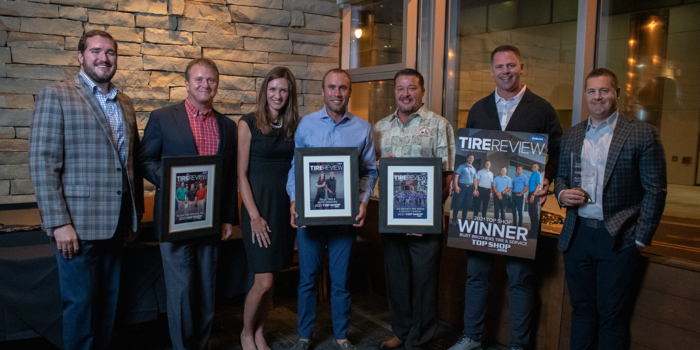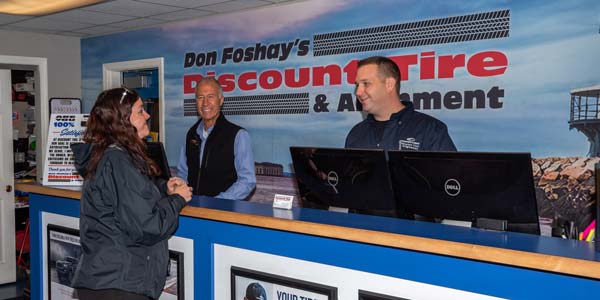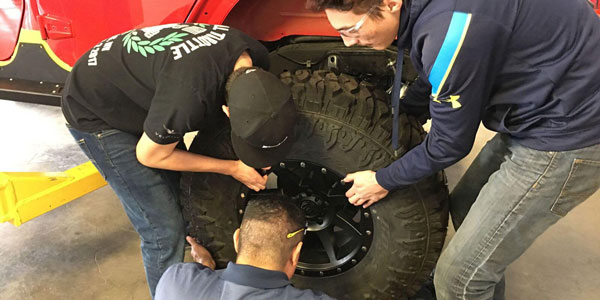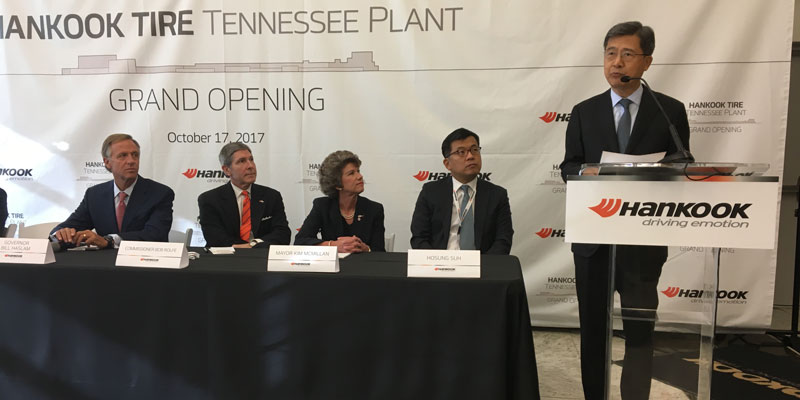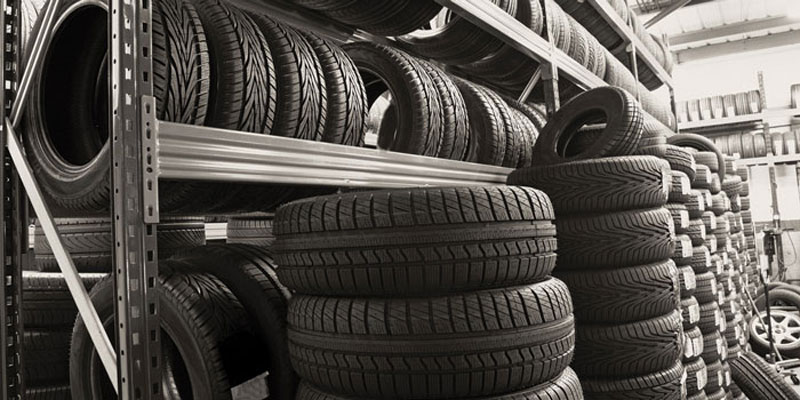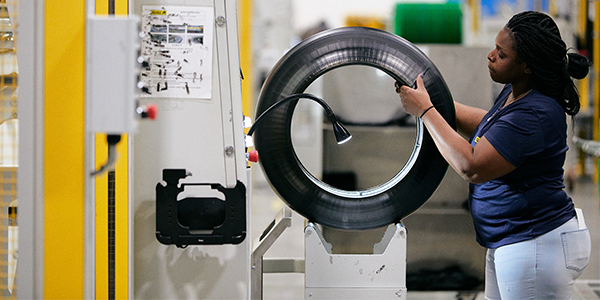TIA Looks Ahead
Merger Complete; Consumer Education, Technician Training Now The Priorities
On Nov. 6, the Tire Industry Association (TIA) will change presidents for the first time. Steve Disney, of Disney Tire & Rubber in Louisville, Ky., ends his year as the president of TIA, and hands the reins over to Tom Raben, of Raben Tire Co. in Evansville, Ind.
As the leaders of the industry’s largest trade association, Steve and Tom review the year that was, and outline their future plans.
The past 12 months have been a great success. With the merger of the ITRA and TANA, we focused the industry’s non-profit efforts. Not only did we merge the two large associations, we also created a comprehensive strategic plan for the years to come.
A year ago, our goal was to complete the merger. We more than succeeded.
Today, one year later, we have two major training and certification programs under development, a new foundation with over $900,000 in assets, and have revitalized efforts for our Louisville-based trade show in March 2003.
In government relations, TIA responded to numerous regulations proposed by NHTSA – several of which hold the potential of forever changing the way this industry conducts business. The efforts of TIA, RMA and others fundamentally impacted laws and regulations that affect all of our businesses ®“ for the better.
In public relations, the association is taking part in National Tire Safety Week, in cooperation with NHTSA and the RMA, a multi-year effort to educate consumers about tire safety and maintenance – another critical industry effort.
TIA now has eight publications for its members, providing detailed information about how to improve service, safety and profitability.
And we merged the staffs of the two former associations into one. Our offices remain in metropolitan Washington, D.C., to focus on representing the industry on Capitol Hill, and also in Louisville to focus on the training and education efforts that members need.
We’re pleased that the merger was completed smoothly, and are very proud of what was accomplished in addition to the merger. During the merger process, our focus was to conduct "business as usual." TIA did better than that. With the help of our outstanding volunteers and staff, we became a better association.
Now we have the most important work to do: improving the industry and adding value to all of our businesses.
As the incoming and outgoing presidents of TIA, we spoke at many state, regional and provincial associations over the past year, and talked to hundreds of professionals in our industry. To a person, everyone was concerned about the image of our products, and the value of our businesses due to this image problem.
There are many challenges for this association to tackle, including effective training, protecting our member’s interests in Washington, and providing information that will help improve profitability. But we believe the boldest contribution this association can make is to improve the image of the tire industry. In the end, that will help our entire industry, and our individual businesses, succeed.
The fact is that the recalls have changed the way consumers view our industry and our businesses. We simply must transform our products in the eyes of the public from a commodity to one of the finest examples of performance and safety equipment available today. We need to tell consumers that tires rarely fail. And we must let consumers know the facts about tire safety and performance.
Here are a few statistics you can share with customers: U.S. motorists drive some 2.6 trillion miles a year. With at least four tires on each vehicle, that’s over 10 trillion tire miles. According to NHTSA, only about 23,000 tow-away crashes per year are caused by flat tires or blowouts.
There are 6.3 million such crashes each year. Under one half of 1% of these accidents are caused by tire problems. And in that .05% when tires are blamed for an accident, consumer negligence plays a significant role.
Many studies highlight the fact that most consumers do not know how to care for their tires. Apparently, even this figure is high, as negligence may have caused some of these accidents.
In our speeches across North America this past year, we’ve highlighted a recent interview on automobile design with Paul Eisenstein, noted automotive writer and publisher of the Web site CarConnection.com. This is worth mentioning as there is a huge difference between how consumers view our products, and how we view our products.
Eisenstein was asked about the most significant changes in automotive design and engineering as related to safety:
"I’ll tell you something that is among the most dramatic changes in the auto industry. Think of it as the Rodney Dangerfield of the automobile – the tire! No respect!
"The fact is, new tires have contributed more to safety, fuel economy and performance than just about anything that has been done since the 1970s. (Tiremakers) are smarter about how to design treads. You have tires that can whisk away rain so that even on slick roads they handle almost as if they were on dry pavement. You have these designs that can grab ice almost like suction cups. You have better compounds – the rubber is better. They’ve gone to radial tires that last forever! You used to have to change your tires, replace them all of the time. Now, some tires last for almost the life of the vehicle."
The fact is the general public does not know that tires are some of the safest and highest-quality products on their vehicles. Our association will take a key role in changing this view. It will not be easy, and it will not happen overnight. But if we commit to changing that perception, it will happen. This is a critical goal for everyone.
In government affairs, we will monitor and act on all government issues related to the industry, including the Federal Highway Act, the TREAD Act, tort reform, business legislation, the Right to Repair Act, environmental and scrap tire acts, taxation issues, and other actions that will influence the tire industry. Specifically, we intend to work closely with state and provincial associations on their legislative issues, and to become better known among legislators.
In another critical effort, we plan to better educate members about the political process and TIA’s government affairs efforts, and increase participation in the association’s Political Action Committee.
In short, our goal is to have TIA become an even more effective voice representing the tire industry before all government entities.
We plan to promote one of the most valuable TIA member benefits, the CarCareONE program, which is the industry’s leading private label credit card. We will also debut a new insurance service for association members. TIA will retain an unbiased insurance expert – not someone selling insurance, but an expert advisor on the tire industry ®“ to assist members with their insurance problems. We’ll also continue to offer assistance in human resources management, an area of high risk for all tire businesses.
With these and other new member services, we plan to be the industry’s most comprehensive resource for profit- and management-enhancing services.
This year, TIA will debut a much-needed effort: a certification program for professionals who service passenger and light truck tires. The program will create hands-on training for every industry professional who touches a tire, and will certify professionals to an all-industry standard – not just the standards of a particular company. This new program will be called the Automotive Tire Service or ATS program. Businesses that employ certified technicians can expect fewer comebacks, more satisfied customers and reduced risk in their operations.
Additionally, our Training and Education Committee is developing a much needed program to help tire industry professionals accurately diagnose tire failure or out-of-service conditions, and to effectively communicate this to the user. Government, the media, trial lawyers and consumers are focusing attention on this area and we must all become experts or we’ll be subject to more complaints, lawsuits, regulation and further diminished profitability.
We are also pleased to announce TIA has launched the TIA Foundation to fund new training programs crucial to improving public safety. With the generous gifts of ASA Tire Systems, Bandag, Carlisle Tire & Wheel, Continental Tire North America, Cooper Tire & Rubber Co., Goodyear Tire & Rubber Co., Michelin North America, Sure Tire, TBC Corp., Toyo Tire USA, Treadways Corp. and Yokohama Tire Corp., the foundation has raised hundreds of thousands of dollars in just the past eight months.
This foundation and the successful fund-raising represent a real opportunity for TIA. A particular focus will be training programs that help businesses comply with government regulations and laws (including the TREAD Act), lower their liability, train employees in critical tasks, and add value to their businesses.
And we really want to emphasize that last point. Everything we will do in the coming year, every effort we make, every speech a TIA leader gives, every dollar we invest, we are doing it in an effort to add value to all industry businesses.
Our work in educating consumers, training industry professionals, investing in member services, creating new industry charities, holding the industry’s best trade shows, and representing the industry’s view on Capitol Hill have one focus – add value to our businesses.
The past 12 months have seen great improvements in our association. Now, with the help of all industry professionals, we can make a significant difference in the coming years.

